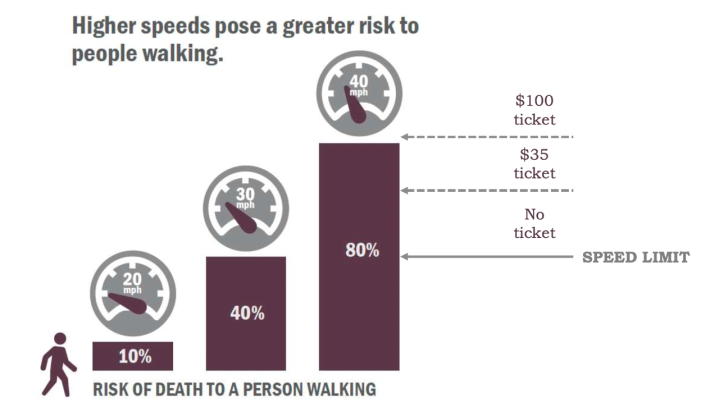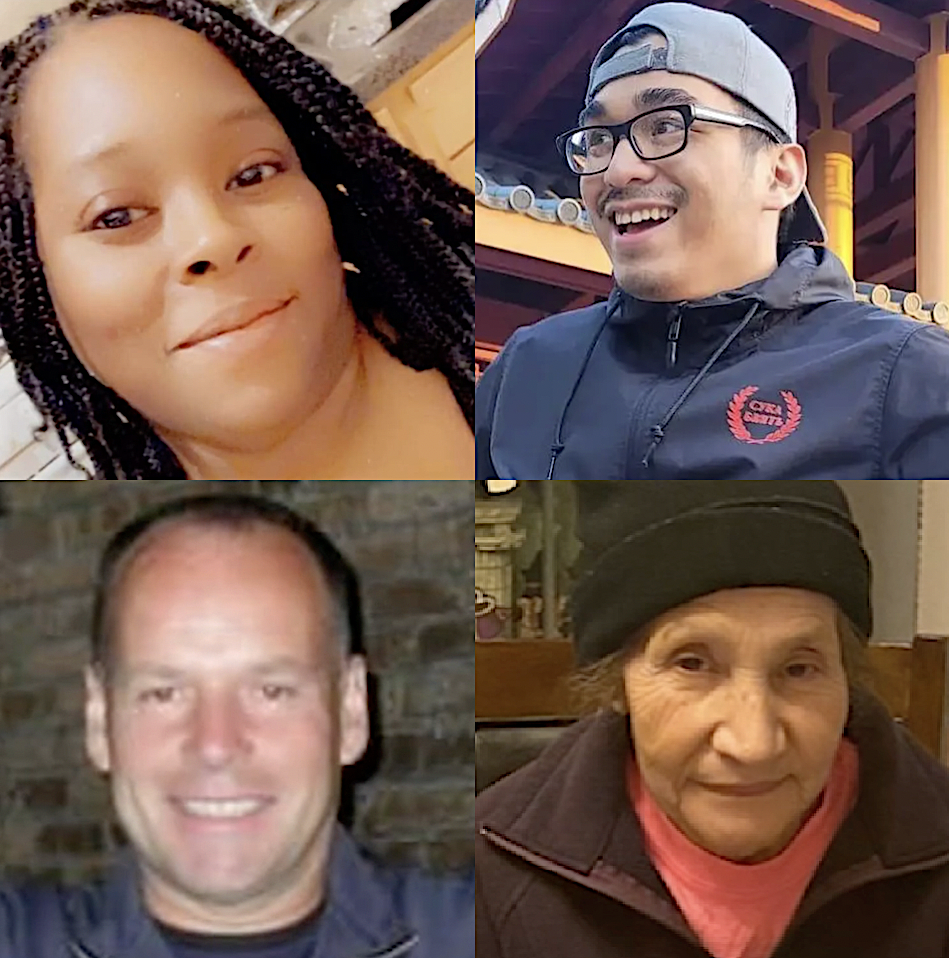Update 6/11/22, 7:00 AM: This piece discusses how in 2016 traffic camera opponent Ald. Leslie Hairston (5th) helped block a road diet proposal on multilane Stony Island Avenue. Early Sunday morning, a speeding driver crashed into a wall of Bret Harte Elementary, located at the north end of Stony Island at 56th Street in the Hyde Park neighborhood. At Hairston's request, the city is planning to widen the avenue near the Obama Presidential Center to appease drivers concerned about the pedestrianization of Cornell Drive within Jackson Park as part of the OPC project.
I was 100 yards away, walking with my 6-month old baby, when this happened this morning at around 6:45am. The driver was probably going well over 80 mph. They took out a wall of Bret Harte. pic.twitter.com/xF9V05WEqo
— 55th Street Bike Lane (@55thBike) July 10, 2022
I was 100 yards away, walking with my 6-month old baby, when this happened this morning at around 6:45am. The driver was probably going well over 80 mph. They took out a wall of Bret Harte.
The current Chicago City Council battle over whether drivers should be allowed to speed by 9 mph without fear of traffic camera tickets isn't just some theoretical debate. It's a literal matter of life and death.
This is an era when traffic violence is increasing nationwide, and Chicago traffic deaths spiked to 173 lives lost in 2021. Reckless or negligent drivers fatally struck four children in our city last month. Motorists injured another six kids within the last ten days.
If Ald. Anthony Beale's (9th) proposed ordinance to roll back Chicago's speed camera ticketing threshold from the current 6 mph rule to 10 mph, drivers will almost certainly injure and kill more innocent people. A 2017 National Traffic Safety Board study found while people struck at 30 mph, our city’s default speed limit, usually survive, those hit at 40 mph almost always die. So there’s a big difference between doing 35 mph in a 30 zone (a speed at which you currently won’t get ticketed in Chicago), and traveling at 39 mph (at speed at which you will.) If you strike someone at 39, they will almost certainly die.

So it's frustrating to see ProPublica, a news outlet whose slogan is "journalism in the public interest," come out with yet another windshield-POV piece on Chicago's automatic enforcement program. Like the piece authors Melissa Sanchez and Emily Hopkins published on the subject last January, their new article spends way more discussing financial impacts on drivers who choose to speed, than the physical impacts these motorists often inflict on bystanders. Given that this piece was posted Friday, less than two weeks before alderpersons will likely vote on Beale's legislation at the next Council meeting on July 20, and could influence votes, it's downright irresponsible journalism.
Like their previous article, Hopkins' and Sanchez's new pieces discusses valid concerns about the fact that Black and Latino drivers have been recorded breaking traffic laws in automated enforcement zones at higher rates than other motorists. They also talk about the economic consequences for motorists who rack up multiple citations after failing to change their behavior, and accrue ticket debt.
But this time they didn't mention the very relevant fact that Chicagoans of color are also disproportionately impacted by traffic violence. According to the city’s Vision Zero Chicago Action Plan, Black Chicagoans die in crashes at twice the rate of their white counterparts.
"Officials wrestle with whether speed cameras have improved traffic safety enough to justify their financial burden on Black and Latino motorists," the headline of the new piece states. In April the city of Chicago took a major step to address that burden by launching the Clear Path ticket equity program, which means single people who makes less than $41,000 (more for those in larger households) only need to pay half the regular fine. That’s $17.50 for a 6-9 mph speeding ticket, or less than three gallons of gas nowadays.
That's also extremely relevant to the topic at hand. Bizarrely, ProPublica doesn't discuss that 50 percent ticket discount in its new piece.

A University of Illinois at Chicago study of our city's traffic camera program released last January confirmed that speed cameras aren't concentrated in communities of color. However, ProPublica previously noted that street layouts may be a factor in why more drivers in African-American and Latino communities on the South and West sides are committing camera-recorded speeding violations than motorists in other parts of town.
In the new article, Hopkins and Sanchez write, "ProPublica identified some road design and neighborhood-based differences that seem [emphasis added] to contribute to the disparities in ticketing, such as wider streets with more lanes that lend themselves to speeding in areas with higher proportions of Black and Latino residents."
But the word "seem" is doing a lot of work in that sentence. The authors previously clarified to me that they didn’t actually determine that speed cameras in African-American or Latino communities are more likely to be located on wide multi-lane roads than cams in other kinds of communities.
The Chicago Department of Transportation should study that issue and make changes to camera locations if needed. But alderpersons shouldn't let that ProPublica's unproven hypothesis influence their votes.
Hopkins and Sanchez stated in Friday's article, "There has been no extensive analysis of the safety benefits of the lowered [6 mph] threshold for issuing speeding tickets." That's true, but ticket data strongly indicates the new rule is doing its job to encourage safer speeds.
While there was a dramatic spike in the number of citations issued by the cameras after the 6 mph threshold went into effect on March 1, 2021, peaking on May 7 of that year, the number of speed camera tickets issued has fallen fairly steadily since then, give or take some seasonal variations. (People tend to drive less in the dead of winter, and cameras near schools don’t issue tickets when classes are not in session.) Predictably, drivers learned that if they wanted to avoid tickets in cam zones, they could only speed by 5 mph.

Moreover, CDOT recently told the ProPublica preliminary data suggests the number of injury crashes in camera zones has dropped since the 6 mph rule kicked in.
Hopkins and Sanchez note that some mobility justice advocates argue that instead of punishing drivers for speeding, we should implement "road diets" on speeding-prone streets, reducing the width and/or number of travel lanes to encourage safer speeds. Those advocates are correct that prevention is preferable to punishment.
Unfortunately, the "Make road diets, not speed traps" approach is much easier said than done. That's because many of the same people who hate automated enforcement also oppose taking any space away from drivers. For example, Ald. Leslie Hairston (5th) has been a vocal opponent of speed cameras and red light cameras. But in 2016 she helped kill a CDOT proposal for a road diet with protected bike lanes on eight-lane Stony Island Avenue in her ward, arguing it would cause traffic jams. In the years that followed, Luster Jackson, 58, and Lee Luellen, 40, were killed by drivers while biking on that stretch of Stony Island.

Meanwhile, we know that Chicago's speed cameras have been saving lives. The UIC study found that from 2015-17 the cams prevented 204 injury and fatality crashes. And, again, there's strong evidence that the 6 mph rule is making them even more effective.
As such, ProPublica isn't doing the public any favors with this new article. Rather, this car-centric piece could help alderman essentially legalize 9 mph speeding in order to score political points during an election year. And that almost certainly would lead to more death and destruction on Chicago streets.




